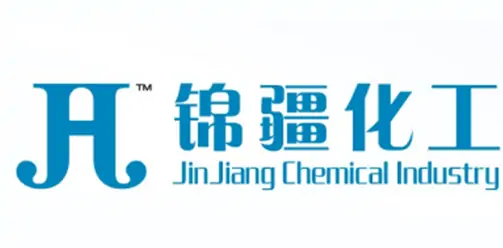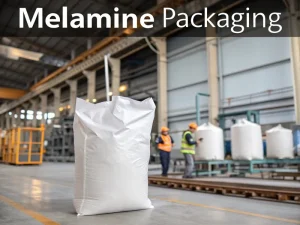
High Pressure Nelamine Use For Melamine Tableware Advantage
Tech Blog High Pressure melamine Use For Melamine Tableware Melamine tableware has become a staple for households, restaurants, and catering services worldwide due to its


In agriculture, nitrogen fertilizer is the backbone of crop growth, and both ammonium sulfate and urea provide essential nitrogen for plants. Still, their chemical properties, application methods, and performance vary greatly. Understanding the differences between these fertilizers is crucial for farmers, gardeners, and agronomists to optimize crop yields, reduce costs, and minimize environmental impacts.
Ammonium sulfate is an inorganic salt compound with the chemical formula (NH₄)₂SO₄, molecular weight of 132.14. At room temperature, it is a colorless rhombohedral crystal. Industrial products are generally small, white, or slightly yellow grains. Still, a few by-products have colors such as green and dark brown. The relative density is 1.77 g/cm³, and the melting point is 280 ℃ (decomposition). It is soluble in water but insoluble in ethanol and acetone. The aqueous solution is acidic (pH=5.5, 0.1mol/L), and the solubility in water decreases with increasing ammonia content.
Ammonium sulfate is a synthetic nitrogen fertilizer containing 21% nitrogen (in the form of ammonium ions, NH₄⁺) and 24% sulfur (in the form of sulfate and SO₄²⁻).
Urea is one of the simplest organic compounds, with the chemical formula CH₄N₂O, a molecular weight of 60.06, a white crystal, odorless and tasteless, and a relative density of 1.335 g/cm³ (at 25 ℃). It is easily soluble in water, ethanol, and benzene, and slightly soluble in ether and chloroform.
Urea is the most commonly used nitrogen fertilizer globally, with a nitrogen content of 46%, making it the highest solid nitrogen fertilizer. Unlike ammonium sulfate, urea does not contain secondary nutrients such as sulfur.
Advantage
Instant availability: In ammonium form (NH₄⁺), it can be directly absorbed by plant roots without conversion, making it an ideal choice for crops with high nitrogen requirements during critical growth stages such as wheat tillering and corn tasseling.
Increasing sulfur content: Sulfate in ammonium sulfate is also an essential nutrient for plants, supporting protein synthesis, enzyme activation, and disease resistance. The added sulfur benefits crops with high sulfur requirements, such as rapeseed, onions, and beans.
Low volatility risk: Unlike urea, ammonium sulfate is less likely to lose nitrogen in gaseous form, even when applied on the surface (although adding it to soil can still improve efficiency).
Acidification effect: Acidification-Over time, it lowers soil pH. Crops that thrive in alkaline soil, such as citrus and grapes, can improve nutrient availability by lowering the pH value, such as iron and zinc.
Disadvantage
Low nitrogen content: When nitrogen is 21%, more products are needed to transport the same amount of nitrogen as urea, thereby increasing transportation and application costs.
Soil acidification: Overuse can lead to low soil pH, reducing microbial activity and nutrient availability (such as phosphorus and calcium).
The unit nitrogen cost is relatively high: due to the lower nitrogen concentration, the cost per kilogram of nitrogen is usually higher than that of urea.
Advantage
High nitrogen content: 46% nitrogen means less product is needed per acre, reducing processing, transportation, and labor costs, which is particularly beneficial for large farms.
Versatility: Suitable for almost all crops and soil types, including neutral and slightly acidic soils. It can be applied as granules, dissolved in water for foliar spray, or mixed with other fertilizers (such as phosphorus and potassium).
Storage stability: Non-explosive, less hygroscopic than ammonium sulfate, easier to store and handle in humid climates.
Cost effectiveness: Compared to ammonium sulfate, the unit cost of nitrogen is lower, making it a budget-friendly choice for meeting general nitrogen needs.
Disadvantage
Slow release rate: Urea itself cannot be directly absorbed by plants. It must first be hydrolyzed by soil bacteria (through urease) to convert to ammonium (NH ₄⁺), and then absorbed. This process takes 2-7 days, depending on soil temperature and humidity.
Volatile loss: If nitrogen is not lost to the soil in the form of ammonia within 24-48 hours after application (such as through tillage or irrigation), especially under warm, dry, or windy conditions. In extreme cases, the nitrogen content can reach up to 30% of the applied nitrogen.
Dependence on soil microorganisms: In cold or flooded soils, urease activity (required for hydrolysis) decreases, thereby delaying plant nitrogen availability.
No secondary nutrients: Unlike ammonium sulfate, urea does not contain sulfur, so sulfur-deficient crops or soils may require additional sulfur fertilizers.
Alkaline soil: lowers pH and improves nutrient absorption (e.g., in areas with calcareous soil).
Sulfur-deficient crops like rapeseed, alfalfa, and Brassica (cabbage, broccoli) require high sulfur content.
Instant nitrogen demand: situations where plants require rapid nitrogen increase (such as after transplantation or during rapid growth stages).
Foliar application: Its low burn risk makes it suitable for foliar spray of sensitive crops such as fruits and vegetables.
Large-scale agriculture: Due to its high nitrogen content, it can minimize transportation and application costs to the greatest extent possible.
General nitrogen demand: Suitable for crops in neutral or slightly acidic soils that require an appropriate amount of nitrogen, such as wheat, corn, and soybeans.
Blended fertilizers: The compatibility of urea with other nutrients makes it a popular basis for customized fertilizer blends.
No till or conservation agriculture: When it is challenging to integrate into the soil, urea can be applied together with urease inhibitors to reduce volatilization.
When comparing the advantages and disadvantages of ammonium sulfate and urea, we must weigh them according to specific circumstances. In situations where rapid nitrogen supplementation is required, such as during the early stages of crop growth or when there is an urgent need to raise seedlings, ammonium sulfate may be a better choice because it is easily soluble in water and can be quickly absorbed by crops. In situations where a large amount of nitrogen fertilizer is needed and long-term effectiveness is desired, urea may be more suitable because of its high nitrogen content and ability to provide a sustained nutrient supply for crops.
In addition, we also need to consider the impact of soil type and crop variety on fertilizer selection. In acidic soil, excessive use of ammonium sulfate may lead to intensified soil acidification, affecting crop growth. Therefore, in this case, urea or other alkaline fertilizers can be considered to neutralize soil acidity. At the same time, different crops have varying nitrogen requirements and absorption abilities, so fertilizer selection needs to be adjusted according to the crop type.
Finally, we must also consider the fertilizers’ application methods and precautions. Both ammonium sulfate and urea must be applied reasonably according to crop needs and soil conditions. Excessive application causes nutrient waste and environmental pollution and may also negatively impact crop growth. At the same time, attention should be paid to the uniformity and depth of fertilizers during application to ensure that crops can fully absorb and utilize them.
Ammonium sulfate and urea are both valuable nitrogen fertilizers. When choosing fertilizers, we must thoroughly consider soil type, crop type, and fertilization time to ensure they can maximize their benefits and promote healthy crop growth. Ammonium sulfate performs well in alkaline soils, sulfur-deficient crops, and situations requiring immediate nitrogen application.
At the same time, urea is highly favored due to its high nitrogen content, cost-effectiveness, and versatility in large-scale agriculture. By considering soil type, crop demand, and environmental conditions, growers can choose appropriate fertilizers to maximize yield while minimizing costs and environmental impact.

Tech Blog High Pressure melamine Use For Melamine Tableware Melamine tableware has become a staple for households, restaurants, and catering services worldwide due to its

Tech Blog Melamine packaging For manufacturers, inaccurate packaging not only fails to meet national standards but also increases labor costs and the risk of product

Tech Blog How to Detect Melamine in Textiles? Melamine powder, a nitrogen-containing heterocyclic compound, is widely used in flame-retardant textiles and plastic products due to

JINGJIANG MELAMINE POWDER
© JINJIANG MELAMINE